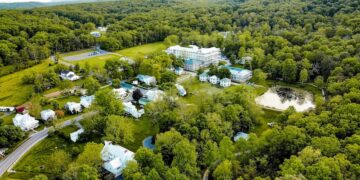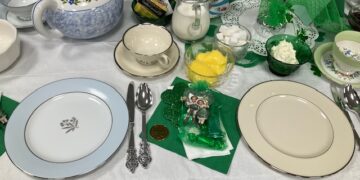As I write this, snow is falling—a sight we haven’t experienced much in the past few years. It’s a welcome change, especially after the dry summer we had. The current snow and rain we’ve had are replenishing the water table, so I’m optimistic for a better gardening season in 2024.
Despite the winter weather, it’s not too early to prepare for the upcoming growing season. A growing trend I’ve seen is the use of raised beds, which serve various purposes. Some like their clean and orderly appearance, while others, particularly those with mobility issues, find raised beds enable easier gardening. Compared to traditional beds, raised beds are often more productive due to less soil compaction which allows for improved drainage. The soil in raised beds can be easily amended, and it warms up sooner than ground-level soil, extending the growing season—a welcome sight after a long winter.
Constructing a raised bed is an ideal project for a sunny day when the gardening itch strikes, but it’s too early for significant planting. I know of a local hardware store that offers practical concrete blocks with built-in channels. These channels function like Lincoln Logs or Lego pieces; sliding a 2×6 piece of wood into the channel securely locks the board in place without the need for additional fasteners. Moreover, these blocks can be stacked to increase the height of the raised bed walls. With channels on all four sides, creating a bed in various configurations becomes a simple task.
Once your raised bed is constructed, the next step is filling it. This part often gets expensive, but it doesn’t have to be that way. While some people opt to kill vegetation under the boxes, an alternative approach is to line the box with old newspapers or cardboard. This not only is environmentally friendly but also smothers weeds. As the cardboard and newspaper decompose, it becomes part of the garden biome.
After this base layer, layer on leaf litter, tree branches, straw, or any compost you have available. Be sure that any branches added are not from a black walnut tree, as the juglone in these trees are toxic to other plants. Finally, top everything with a thick layer of garden soil. It’s crucial not to confuse potting soil with garden soil, as they are distinct products, and I want your garden to thrive!
If you’d like to see the raised bed corners for yourself, or have questions about prepping for the upcoming growing season, come visit us at any of our four locations. If you have questions about building a raised garden bed, remember that at Randy’s Hardware, we don’t mind your questions. We don’t mind them at all!





























